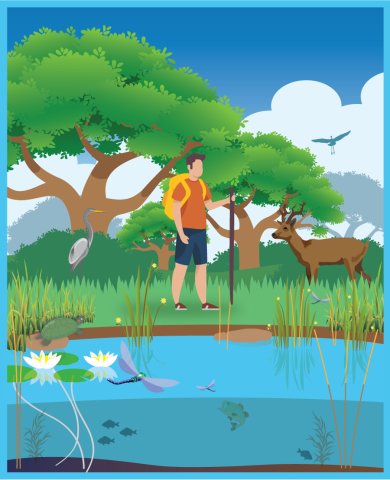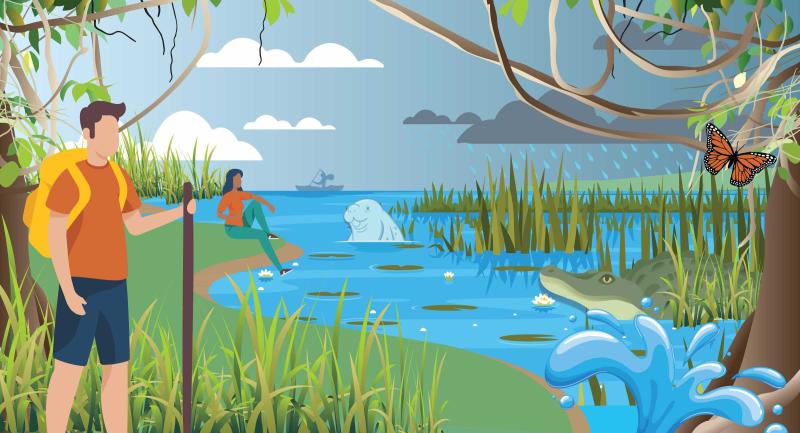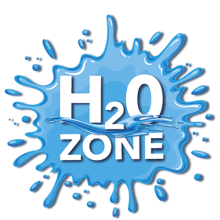In addition to groundwater, Florida also has many different surface water bodies. Surface waters are those found above ground. In Florida, that includes around 7,700 lakes, 50,000 miles of rivers and streams, and 700 springs! Surface waters are home to many different types of plants and animals. They also provide a place for people who live in Florida, or come to visit, to enjoy many recreational activities, such as swimming, kayaking, fishing and more.
Exploring Water Habitats

A habitat is the specific place where living organisms find the things they need to survive, such as food, shelter, water and space. Not all living things can survive in the same habitat. Factors that determine where an organism can live include sunlight, temperature, food supply and weather.
Here are examples of some of the freshwater habitats that can be found in west-central Florida:
- Rivers: Rivers are bodies of fresh water that are created from excess rainwater that flows off the land. Rivers may also receive fresh water inputs from groundwater or smaller tributaries.
- Lakes: Lakes are inland bodies of fresh water that can be either natural or constructed and are usually surrounded by land.
- Wetlands: Lands that are wet all, or part, of the year. Wetlands can be either freshwater or saltwater habitats.
- Springs: Springs are created when groundwater flows up to the surface. Springs often form the headwaters of a river.
- Estuaries: Estuaries are bodies of water along the coast that are formed when freshwater from rivers and streams flow into and mix with salt water from the ocean. Estuaries are one of the most productive habitats on earth!
You've finished the Water Basics section! Let's move on to the Water Quality section.


